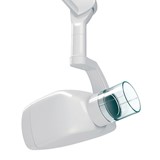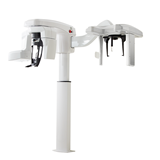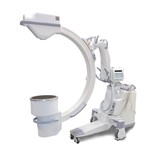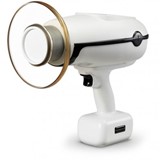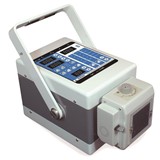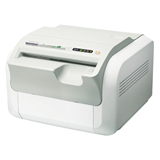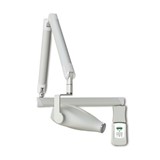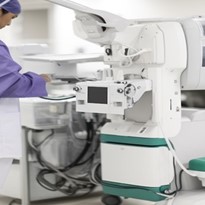Mobile X-ray technology has undergone significant advancements in recent years, revolutionizing the way healthcare professionals diagnose and treat patients. These portable devices have become indispensable in various medical settings, from emergency rooms to remote clinics, providing critical insights into a patient's condition. In this comprehensive article, we will delve into the future of mobile X-ray technology, exploring the integration of Artificial Intelligence (AI) in image analysis, the miniaturization of portable imaging devices, telematics for remote monitoring, and how these innovations are expanding access to healthcare. We will also discuss the latest trends and innovations shaping the landscape of medical imaging.
I. Integration of Artificial Intelligence (AI) in Image Analysis
AI is rapidly transforming the field of medical imaging, and its integration into mobile X-ray machines holds great promise for improving patient care and diagnostic accuracy. Below, we will examine the role of AI in mobile X-ray machines, its benefits in image analysis, and the challenges associated with its implementation.
1. The Role of AI in Mobile X-Ray Machines
Explaining AI Integration: Mobile X-ray machines are increasingly incorporating AI algorithms to enhance their functionality. These algorithms can process and analyze X-ray images with unprecedented speed and accuracy.
- Benefits of AI in Image Analysis: The integration of AI brings numerous benefits, notably in image analysis. AI algorithms can swiftly identify anomalies, assist in identifying medical conditions, and provide quantitative data that aids in diagnosis and treatment planning.
- Challenges and Considerations: While the potential of AI in mobile X-ray technology is immense, its implementation is not without challenges. These include data privacy concerns, the need for large datasets for training, and ensuring the reliability and safety of AI-driven diagnoses.
2. AI-Enhanced Diagnosis and Decision Support
AI's impact on mobile X-ray technology extends beyond image analysis. It has the potential to significantly enhance the diagnostic process and provide valuable decision support for healthcare professionals.
- Assisting in Diagnosis: AI algorithms can assist healthcare providers by flagging potential issues in X-ray images. They can identify fractures, tumors, or abnormalities, allowing for quicker and more accurate diagnoses.
- Decision Support: Healthcare professionals can benefit from AI's decision support capabilities. AI can provide recommendations based on historical patient data and medical literature, aiding clinicians in making informed decisions about treatment plans.
- Examples of AI Applications: Several real-world examples showcase the power of AI in mobile X-ray technology, from detecting lung diseases like pneumonia to identifying bone fractures and joint conditions. These applications are paving the way for more efficient and reliable healthcare practices.
II. Miniaturization and Advancements in Portable Imaging
-
Shrinking Technology: Miniaturization in Mobile X-Ray Machines
Miniaturization in medical imaging devices involves reducing the size and weight of X-ray machines while retaining their diagnostic capabilities.
This transformation has significantly improved the portability of X-ray machines, allowing for greater flexibility in healthcare settings.
Advantages of miniaturization:
- Enhanced mobility: Smaller and lighter devices are easier to transport within healthcare facilities and to remote locations.
- Patient comfort: Reduced device size leads to a less intimidating and more comfortable experience for patients undergoing X-ray examinations.
- Versatility: Miniaturized X-ray machines can be used in various clinical settings, including emergency rooms, operating rooms, and bedside examinations.
-
Advanced Imaging Capabilities
The field of mobile X-ray technology has seen remarkable advancements in imaging capabilities, revolutionizing diagnostic procedures.
Types of scans and images achievable with portable devices:
High-resolution digital radiographs: Miniaturized X-ray machines offer exceptional image quality, enabling detailed examination of anatomical structures.
- Fluoroscopy: Some portable X-ray units now support real-time imaging for procedures like vascular interventions and orthopedic surgeries.
- 3D imaging: Advanced mobile X-ray systems can create three-dimensional reconstructions, aiding in complex diagnoses and treatment planning.
- Dual-energy imaging: These devices can differentiate between different tissue types, enhancing the detection of abnormalities.
Benefits of advanced imaging in mobile X-ray machines:
- Accurate diagnoses: High-quality images improve diagnostic accuracy, leading to better patient outcomes.
- Reduced radiation exposure: Advanced technology allows for lower radiation doses while maintaining image quality, ensuring patient safety.
- Streamlined workflows: Real-time imaging and 3D reconstructions enable quicker decision-making during procedures.
- Enhanced patient care: Portable devices equipped with advanced capabilities facilitate more precise treatments and interventions.
III. Telematics and Remote Monitoring of Mobile X-Ray Machines
1. Telematics in Healthcare
- Definition of Telematics: Telematics, in the context of healthcare, refers to the integration of telecommunications and informatics to enable the remote monitoring and management of medical equipment, including mobile X-ray machines.
- Relevance to Mobile X-Ray Machines: Telematics plays a pivotal role in enhancing the functionality of mobile X-ray machines by enabling seamless communication and data exchange. It ensures that these machines can be remotely monitored and controlled, transforming the way healthcare providers access critical diagnostic information.
- Remote Monitoring and Data Transmission: Telematics allows healthcare professionals to remotely monitor the status and performance of mobile X-ray machines in real-time. Through secure data transmission, these machines can send diagnostic images and operational data to centralized healthcare systems, facilitating immediate access to critical patient information.
- Real-time Healthcare Decision-Making: The real-time data transmission capabilities offered by telematics have a profound impact on healthcare decision-making. Medical practitioners can access diagnostic images promptly, enabling rapid assessment and timely intervention, especially in emergency situations. This capability significantly enhances patient care and outcomes.
2. Benefits and Challenges of Remote Monitoring
- Benefits of Remote Monitoring for Patients:
- Timely Diagnosis: Patients benefit from timely diagnoses and treatment plans as their medical images are accessible to healthcare providers without delays.
- Reduced Patient Travel: Remote monitoring reduces the need for patients to travel to medical facilities for follow-up appointments, particularly important for individuals in remote or underserved areas.
- Improved Continuity of Care: Healthcare providers can maintain continuous care by monitoring chronic conditions through remote access to X-ray results.
- Benefits for Healthcare Providers:
- Efficiency: Remote monitoring streamlines the workflow of healthcare professionals, allowing them to allocate their time and resources more efficiently.
- Cost Savings: Healthcare institutions can optimize their resources and reduce costs associated with onsite equipment maintenance and operations.
- Enhanced Collaboration: Telematics fosters collaboration among medical experts, enabling consultations and second opinions irrespective of geographical boundaries.
- Challenges in Remote Monitoring:
- Data Security: Ensuring the security and privacy of patient data during transmission is a paramount concern. Robust encryption and cybersecurity measures are essential to safeguard sensitive information.
- Connectivity Issues: Reliable internet connectivity is critical for effective remote monitoring. Remote or rural areas with limited access may face connectivity challenges.
- Integration Complexity: Integrating telematics systems with existing healthcare infrastructure can be complex and may require significant upfront investment and training.
- Best Practices for Successful Implementation:
- Robust Data Security Protocols: Implementing robust encryption and data security measures to protect patient information during transmission.
- Redundant Connectivity: Ensuring redundant internet connectivity options to mitigate disruptions due to network failures.
- Comprehensive Training: Providing comprehensive training to healthcare staff on the use of telematics systems and remote monitoring procedures.
IV. Expanding Access to Healthcare Through Mobile Imaging Units
1. Mobile Imaging Units: Bridging Healthcare Gaps
- Concept of Mobile Imaging Units: Mobile imaging units represent a pivotal advancement in the realm of healthcare accessibility. These units are essentially equipped with state-of-the-art medical imaging technologies, including mobile X-ray machines, which can be transported to various locations, bringing diagnostic services closer to communities that might otherwise face geographical or logistical barriers.
- Benefiting Underserved Populations: The primary beneficiaries of mobile imaging units are often underserved populations residing in remote or economically disadvantaged areas. These units can reach individuals who may lack easy access to established healthcare facilities due to factors such as distance, limited transportation options, or resource constraints.
- Real-World Success Stories: Several exemplary initiatives worldwide underscore the effectiveness of mobile imaging units in bridging healthcare gaps. For instance, the "Rural Health on Wheels" program in India has been instrumental in delivering essential diagnostic services, including X-ray imaging, to remote villages. This initiative has significantly improved early disease detection and timely medical interventions.
2. Addressing Healthcare Disparities
- Contribution to Healthcare Equality: Mobile X-ray machines play a crucial role in reducing healthcare disparities by ensuring that healthcare services are not confined to urban centers or well-established healthcare facilities. This technology empowers healthcare providers to extend their reach, offering equitable access to diagnostic capabilities regardless of the patient's location.
- Impact on Underserved Communities: Underserved communities, which often grapple with limited access to healthcare resources, experience substantial benefits from the deployment of mobile X-ray units. Timely access to diagnostic imaging aids in early detection of diseases, resulting in more effective treatment and improved health outcomes.
- Need for Continued Investment: To sustain and expand the impact of mobile X-ray initiatives, continued investment is imperative. This investment should encompass technological advancements, workforce training, and logistical support. Ensuring the reliability and efficiency of these units is essential to maximizing their potential in addressing healthcare disparities.
V. Trends and Innovations Shaping the Future of Medical Imaging
In the realm of medical imaging, the field of mobile X-ray technology is undergoing rapid evolution, driven by emerging trends and innovative breakthroughs. These advancements not only promise enhanced diagnostic capabilities but also hold the potential to revolutionize healthcare delivery. In this section, we will delve into the current trends in mobile X-ray technology and the considerations that healthcare organizations must keep in mind for future implementation.
1 .Emerging Trends in Mobile X-Ray Technology
- Digital Transformation: The transition from traditional analog X-ray systems to digital radiography is a prominent trend. Digital X-ray sensors offer higher image quality, reduced radiation exposure, and seamless integration with electronic health records (EHRs).
- Wireless Connectivity: Mobile X-ray machines are increasingly equipped with wireless communication capabilities. This enables real-time transmission of images to radiologists and specialists, facilitating rapid diagnosis and treatment decisions.
- AI-Powered Image Analysis: Artificial Intelligence (AI) is becoming integral to image interpretation. AI algorithms can assist radiologists by detecting abnormalities, enhancing image quality, and even predicting patient outcomes based on historical data.
- Portability and Miniaturization: Advances in miniaturization have resulted in more compact and portable mobile X-ray machines. These lightweight devices are easier to maneuver, making them suitable for bedside imaging and remote healthcare settings.
- Dose Reduction Techniques: Efforts to minimize radiation exposure continue to evolve. Mobile X-ray technology now includes dose reduction algorithms and real-time monitoring to ensure patient safety.
- Hybrid Imaging: The integration of multiple imaging modalities, such as X-ray and ultrasound, into a single device is a growing trend. This fusion enhances diagnostic accuracy and provides a broader spectrum of information for healthcare providers.
2 .Considerations for Future Implementation
As healthcare organizations contemplate the adoption of mobile X-ray technology, several important considerations come to the forefront.
- Expert Recommendations: Seek expert guidance when selecting and implementing mobile X-ray systems. Collaborate with radiologists and technologists to ensure that the chosen technology aligns with clinical needs.
- Ethical Concerns: With the integration of AI, ethical considerations surrounding patient data privacy and informed consent become paramount. Establish robust protocols to protect patient information and uphold ethical standards.
- Regulatory Compliance: Adherence to regulatory guidelines and certifications is essential. Ensure that mobile X-ray systems meet all applicable quality and safety standards, and stay abreast of evolving regulations.
- Training and Education: Comprehensive training programs for healthcare staff are crucial for the successful integration of mobile X-ray technology. Continuous education ensures proficiency and optimal utilization.
- Cost-Benefit Analysis: Evaluate the long-term cost implications, including maintenance, training, and operational expenses, against the anticipated benefits of improved diagnostics and patient care.
- Interoperability: Ensure that the chosen mobile X-ray system seamlessly integrates with existing healthcare infrastructure, including EHRs and Picture Archiving and Communication Systems (PACS).
In conclusion, the future of mobile X-ray technology holds tremendous promise for advancing healthcare practices and improving patient outcomes. The integration of Artificial Intelligence (AI) into image analysis is poised to enhance diagnostic accuracy and provide invaluable decision support to healthcare professionals. The miniaturization of portable imaging devices makes healthcare more accessible and comfortable for patients, while advanced imaging capabilities enable precise diagnoses and streamline medical procedures. Telematics and remote monitoring of mobile X-ray machines bring healthcare closer to remote and underserved communities, reducing healthcare disparities. Mobile imaging units are bridging gaps in healthcare accessibility, ensuring that diagnostic services reach those who need them most. Emerging trends in mobile X-ray technology, such as digital transformation, wireless connectivity, AI-powered analysis, and hybrid imaging, promise to revolutionize medical imaging. However, implementing these technologies requires careful consideration of ethical, regulatory, training, and interoperability factors. As we look to the future, continued investment in mobile X-ray technology and its responsible implementation are essential to harness the full potential of these innovations and achieve equitable healthcare for all.









-160x160-state_article-rel-cat.png)




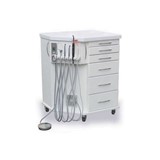


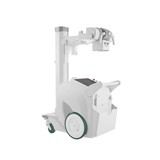
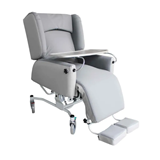
-160x160-state_article-rel-cat.png)

